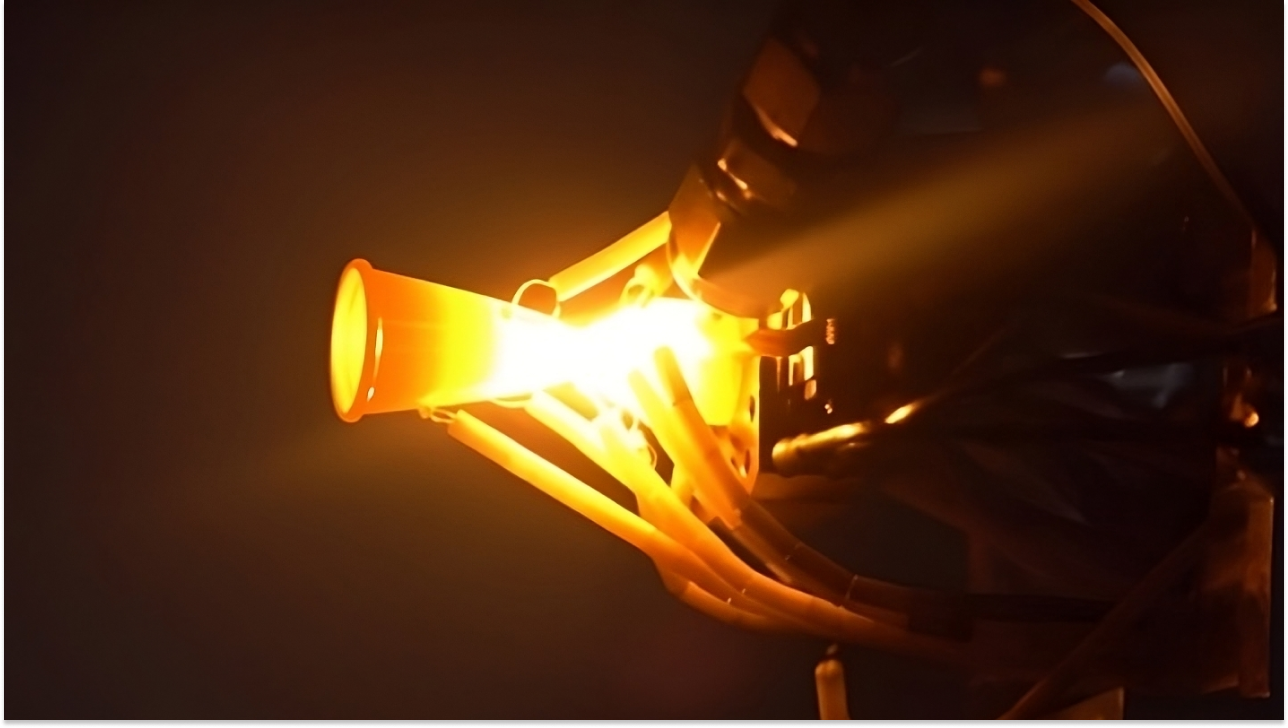Water: the propellant of the future
12.12.2023

The power of water
Part of the Orbital Products Equipment & Services Directorate, Jean-Marie Le Cocq, Programme Manager, and Nicholas Harmansa, Systems Engineering Manager, talked to us in detail about this innovative approach which could replace propulsion systems currently in use on low- and mid-Earth orbit (LEO and MEO) satellites, generally fitted with chemical boosters powered by toxic products such as hydrazine. By opting for a hybrid chemical and electric solution, the ingenious water-based propulsion system – created by the teams at ArianeGroup Lampoldshausen – offers numerous advantages when compared with the electrical propulsion systems which are especially prevalent for satellite constellations.
The system is based on the principle of electrolysis. A large pressurised tank delivers demineralised water to an electrolyser powered by an electric current from the satellite’s solar panels. This breaks the water down into hydrogen gas and oxygen gas, which are then stored separately in pressurised tanks. The satellite’s thrust comes from the ignition of these two gases together in the combustion chamber. Once filled (a process taking about 90 minutes), the tanks can provide enough fuel for about 30 seconds of thrust.
“We wanted to develop a system with a truly green fuel. What’s more, water is available everywhere on Earth and can be transported without risk.” Jean-Marie Le Cocq “I’m sure that water is the fuel of the future.” Nicholas Harmansa
Numerous advantages
The configuration chosen for the water propulsion system has extremely high flexibility potential; it could be fitted to a number of observation, communications, and constellation satellites. The system itself is designed so that it is possible to increase the number of electrolyser cells, the size of the tanks and the number of boosters, in order to meet the needs of many satellites. The idea is to develop a standardised system, the size of which can be adapted, offering an alternative up to three times less costly than current chemical solutions.
“Hydrazine has a specific impulse of 200s as against 300s for water. The fact that this is higher is extremely interesting. It’s even comparable to the specific impulse of the largest chemical propulsion systems for satellites.” Jean-Marie Le Cocq
As well as being risk-free and easy to use, whether upstream at the propulsion system manufacturers, or on the pad at the moment of launch, this water propulsion system in theory depends solely on sunlight and filling the tanks in order to function. Eventually, it might even be possible to produce water independently on the Moon, or even on Mars, other celestial bodies or asteroids, to bring interplanetary missions back to Earth, or to continue their journey on to even more remote destinations.
In flight by autumn 2026
With the support of the European and German space agencies, and in cooperation with the Belgian companies RHEA and Aerospacelab, an in-flight demonstration could be carried out by the autumn of 2026. The European Spectrum Monitoring Service (ESMS) satellite fitted with this water propulsion system will be launched into orbit to carry out radio-frequency mapping across the European Union. Tests will then be carried out in a zero-gravity vacuum to demonstrate that the electrolyser works correctly, providing the tanks and the engine with the gases needed. The booster combustion time and the time needed to refill the gas tanks will also be studied, as will the possibility of changing the satellite’s position.